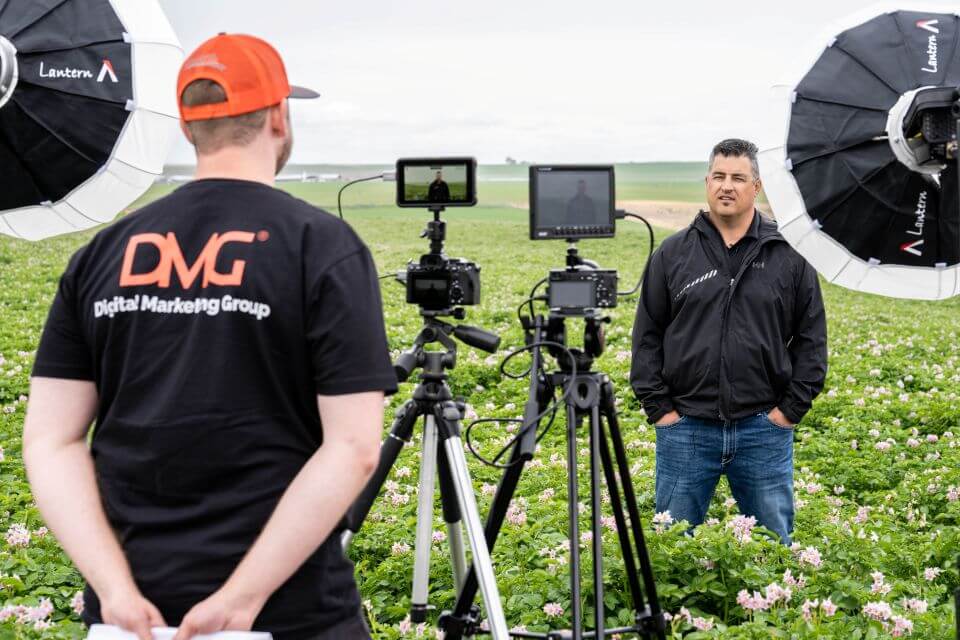As a business owner, you have a lot on your plate. You’ve been using digital advertising for years, with varied results. You’re ready to step up your campaigns and have been hearing more about AI and programmatic advertising, but still aren’t sure if it’s right for you.
Think about your last campaign. Who did it target? Where did it run? What visuals did it use? What were the results?
Could have done it better? A lot of advertising is about tweaking and testing. The more you refine your work, the more results you’ll experience. Programmatic advertising boosts the experience. It helps you reach your audience faster and better.
It should come as no surprise that technology is changing our world at warp speed.
Google had four core updates in 2023, double the two it crafted in 2022. One of those was to include Google’s Search Generative Experience (SGE), which will continue to evolve as AI grows. You may have already used SGE; it provides users with quick, clear overviews to search topics without having to click. If you’ve relied on clicks before, it may be changing your search strategy.
What does that mean? AI will continue to change and enhance every online experience. We can expect faster response times, new content opportunities, and new ad formats. It’s time to rethink your approach to online marketing.
What Is Programmatic Advertising
You want to place an ad online. Platforms across the internet are ready to receive your ads and show them to their visitors.
In the early days, ads were traded in much the same way as print advertising. You would work with a sales team for various platforms to negotiate a rate to place an advertisement on a web page for a certain price and term.
As technology has advanced, it has opened up ways for ad servers to automate the process. You could show your ads across multiple venues, all with the same ad company. This is what gives Google its power today.
The larger the campaign, the more control. Leftover ad space was sold at a discount, perfect for smaller campaigns looking for ways to expand. The problem with this solution is the targeting approach—you, as an advertiser, had very little control. This is what opened the door to real-time bidding.
Real-Time Bidding for Better Ads
Real-time bidding allows you to buy and sell ads through real-time auctions. This is machine learning at work. In the time it takes a webpage to load, around 100ms, the real-time bidding process occurs like this:
- When a visitor types in a URL, a request is sent to an ad exchange. It includes your demographics and those of the website you’re about to view.
- This information is matched to all available advertisers in real-time, with the best moving up in possibility. Let’s say you’ve been searching for cars; this would allow potential car ads that meet your specifications to be placed. This is why you suddenly see ads for things you’ve recently searched.
- The winning bidder gets to display its ad on the publisher’s site. As your typed-in URL loads, the ad will feed into place.
- The company that placed the winning bid is charged for the ad.
Dig Deeper
Automating With Programmatic Advertising
How To Keep Your Content Fresh And On Point
Is Real-Time Bidding the Same as Programmatic Advertising?
Real-time bidding is the dominant form of programmatic advertising. But there are other programmatic advertising options.
Programmatic Direct options give the advertiser a guaranteed number of impressions on specific sites. This is usually reserved for larger, premium accounts doing large-format advertising. It works at fixed pricing levels rather than through an auction.
Private Exchange buying involves a publisher cherry-picking the advertisers it wishes to do business with. It invites specific advertisers to bid on their advertising space. This bypasses ad exchanges altogether and connects ad buyers with specific publishers. An auction may still take place, but it’s handled manually where the two parties are familiar.
Not sure which is right for you? The key is in moving forward. This is an ever-growing, ever-changing field. Learning should be your number one strategy to determine how it fits within your marketing plan, and how it will work for you.
Your Next Step With Programmatic Advertising
Now that you have a surface-level appreciation for how programmatic advertising works, what can you do with the information? How can you use it to upgrade your digital marketing campaigns? Where do you start?
Set Your Goals
As with every good marketing strategy, you’ll need to establish goals from the start. Do you want to push more people to your web pages? Are you building a list? Are you establishing brand authority? With clear goals in mind, you’ll give every programmatic ad you create a definitive direction for ROI.
Add the Human Touch
AI will control much of your campaign. Yet you’re targeting humans who are looking for human connection. Skilled marketers understand that the two need to marry in the middle for success. Constantly ask yourself: how can I create more engagement? It will help you build better strategies.
Establish Your Budget
A lot of programmatic ad spending is trial and error. With new technology comes opportunity—and potential loss as you face a steep learning curve. Ad fraud cost marketers $84 billion in 2023, 22 percent of all ad spend. Because this is a new field, focusing on “shiny objects” with lots of fake guarantees is easy. Be cautious in your approach to ensure success with your strategy.
Get the Help You Need to Succeed
With AI paving the way to better marketing, programmatic advertising has a bright future. Accessibility has never been easier, especially for smaller businesses trying to make their online ad campaigns even more successful.
It’s revolutionizing the ad-buying process by using advanced technology that learns as it goes. With real-time optimization giving you the ultimate flexibility, you can reach your audience as never before.
Will you be using programmatic advertising as a marketing strategy this year?




